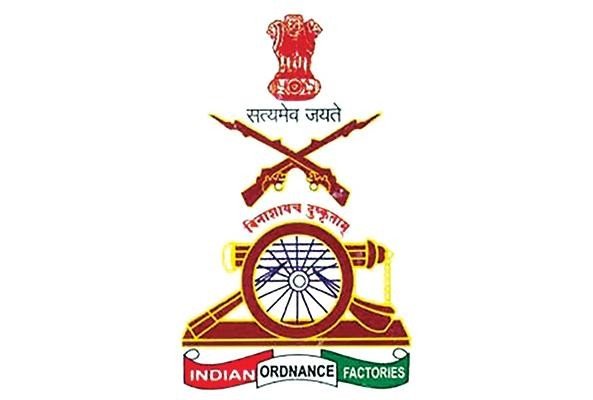Requiem For IOFS Mourning And Memory, Octogenarian Pens Down His Golden Day In OFB
Former IOFS R. Sundaram recalls the golden days of Ordnance Factories as the sun sets for OFB

Go September. .OFB stands dissolved, says the Government.. Seven Defence Public Sector Undertakings) DPSUs are born, in what appears to be in a tearing hurry. It seems to be the flavour of the season both in the international and domestic arena; abruptly dismantling without preparation -may be due to conviction or compulsion- leaving chaos and confusion in its trail. My purpose here is not to discuss the merits and demerits of this change nor the process of change.
We the oldies who used to carry the tag IOFS (Indian Ordnance Factories Service) after our names cannot do much beyond wringing our hands in helplessness and perhaps wallowing in self pity. For me the saddest part is the wilful abandonment of Calcutta from the Ordnance factory scene which once was the epicentre of the Indian ordnance factories from the days of Wellesley and Cornwallis of the East India Company. The DGOFs ( Director General Ordnance Factories) of yore used to occupy the same chair once sat upon by viceroys of India ( equivalent to our PM in administrative power now )

Remember, the first ordnance factory was established in Kashipur now Cossipore on the banks of river Hoogly on 18 March In 1802. We were proud of this heritage, I mean those of us who had the good fortune to serve in the Ordnance Factories. I still remember how chests brimmed with pride when we heard Rajiv Gandhi call us as a “force behind forces” and gave the honorific the “Fourth Arm of defence”. .
It is recorded history that the first Indian Ordnance Service Officer, Assistant Works Manager (on Probation) was appointed nearly a hundred years ago in 1926, the service itself was constituted in 1935 and again reconstituted after independence in 1952. . The first Indian superintendent of the oldest factory at Cossipore was Mr. RB Sathe around the time of Indian independence. Heads of factories were then called superintendents but later the designation was changed as General Manager.
My memories go back to the beginning of sixties and my association with the stalwarts and well regarded top honchos of the Ordnance Factories, Indians, who were recruited in England during the World War II. Mr SJ Shahaney and Mr RM Muzumdar to name a few. To them and their teams credit should go for laying the base for a robust , sound and highly organised industrial chain under the government post independence One was awarded the highest national award Padma Bhushan and another a Padmashree. Another distinguished himself by despatching depth charges which sank an enemy submarine in the Bay of Bengal during the Bangladesh war. Six huge production plants – one touted to be the biggest east of Suez in those days- for armaments and explosives were set up in record time in Maharashtra and two in Tamilnadu for tanks and small arms in the sixties under their helmsmanship.. That was the time when even getting a telephone connection took not months but years. In sum, the nation trusted the organisation ipso facto its cadre of officers. All three wars of the last century including the recent one fought in Kargil in 1999 with our belligerent neighbour were won with the wherewithal provided by these factories. This cannot be denied even by the most ardent protagonist of dismantling OFB as a good policy..
I do not think even now , any one can simply dismiss offhand the wisdom of treating Ordnance Factory organisation as an integral part of the defence and war ministries of the government both during war and peace times. In its hoary history Ordnance Factories were directly under Military control reporting to the MGO ( Master General of Ordnance) only for a very brief period. Otherwise they were on par with all other civilian departments. However this is the first time in the 221 year history of the factories, well knit vertically integrated highly interdependent plants are being fragmented, dispersed and placed to be at an arm’s length away from the government.
But that is a far lesser concern now. When it comes to the crunch military hardware can be acquired by various means, for instance, by direct imports or even by clandestine purchases But it is the apprehension that a culture and tradition built for over a century around both our work and leisure time spent together during our life long careers involving as it did our families and children will vanish is making me and my IOFS colleagues disconsolate.
I hear that the Government has made several assurances on continuation of service conditions to the officers now serving in this establishment. But do service conditions alone make a service cadre?.
.
Apart from the military services if one wanted to see a well regulated , disciplined , well oiled, smooth running organisation, there it was in the Ordnance Factories both in the plants and their residential colonies All the good aspects of the military way of living had rubbed on them. The officer cadre exemplified the enviable trait of companionship regardless of religion, caste or colour of skin and a quality perhaps missing in most other civilian cadres. Perhaps this was because the officers in the Ordnance Factories could build their own traditions transcending parochialism , living together as families in remote self contained colonies called estates with their own schools , hospitals, womens’ welfare associations away from the urban chaos. I remember whenever I had to be away for months or even a year on work and I could leave my family without a care or fear about their safety and security. Such living also led to some pleasant happenings like marriage alliances across states among the progeny.
Perhaps Old order, even if it is a proven one of 220 years has to yield place to the new – For now and Forever Farewell Indian Ordnance Factories Service.




